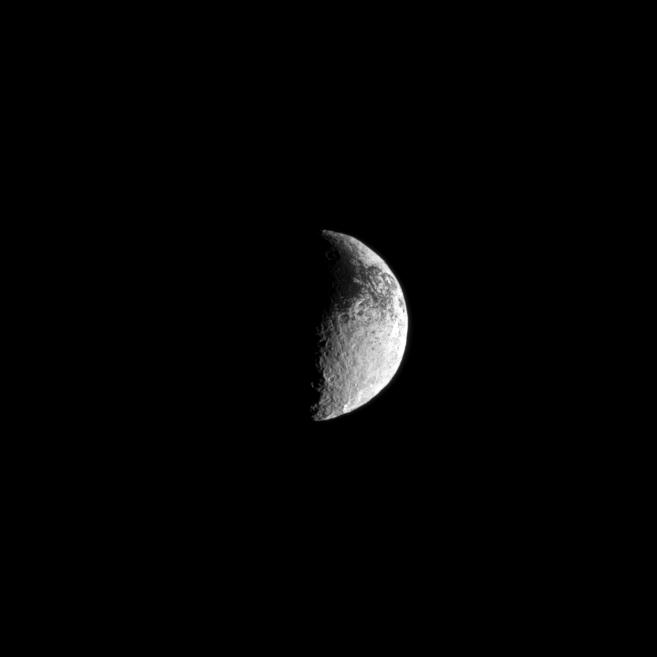Infringing Darkness

| PIA Number | PIA12706 |
|---|---|
| Language |
|
Some of Iapetus' dark surface interrupts the moon's lighter terrain in this Cassini spacecraft view.
Scientists continue to investigate the nature of this moon's dark and light surface. See Global View of Iapetus' Dichotomy to learn more. Lit terrain seen here is on the trailing hemisphere of Iapetus (1,471 kilometers, or 914 miles across). North on Iapetus is up and rotated 10 degrees to the right.
The image was taken in visible light with the Cassini spacecraft narrow-angle camera on May 9, 2010. The view was acquired at a distance of approximately 1.3 million kilometers (808,000 miles) from Iapetus and at a sun-Iapetus-spacecraft, or phase, angle of 95 degrees. Image scale is 8 kilometers (5 miles) per pixel.
The Cassini-Huygens mission is a cooperative project of NASA, the European Space Agency and the Italian Space Agency. The Jet Propulsion Laboratory, a division of the California Institute of Technology in Pasadena, manages the mission for NASA's Science Mission Directorate, Washington, D.C. The Cassini orbiter and its two onboard cameras were designed, developed and assembled at JPL. The imaging operations center is based at the Space Science Institute in Boulder, Colo.
For more information about the Cassini-Huygens mission visit http://saturn.jpl.nasa.gov . The Cassini imaging team homepage is at http://ciclops.org .
Credit: NASA/JPL/Space Science Institute
